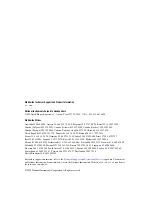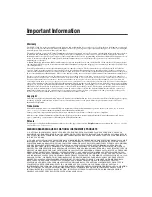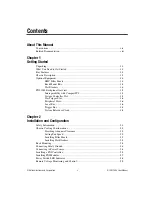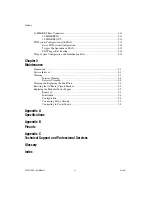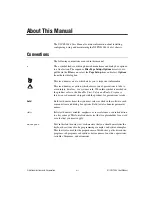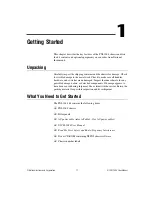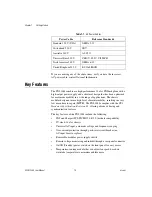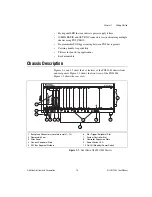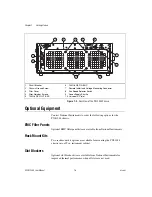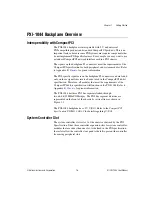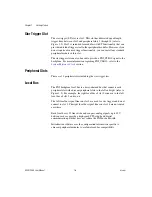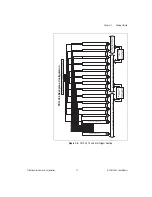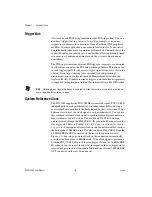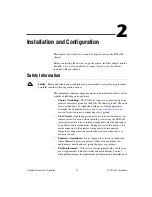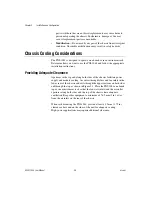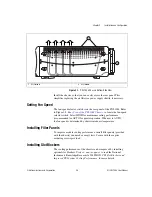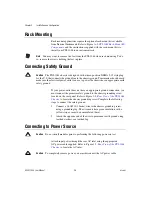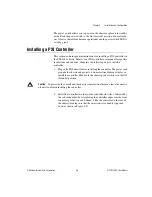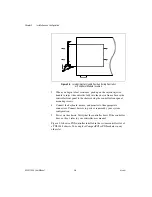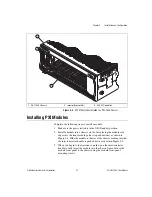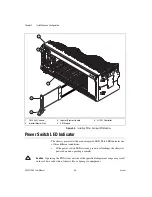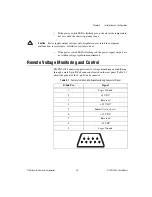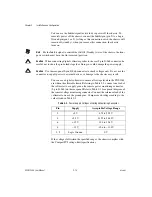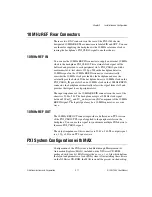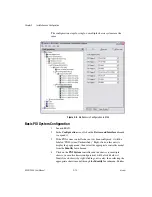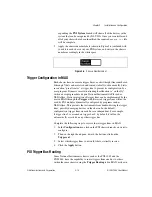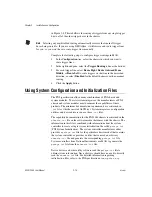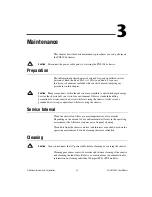
Chapter 1
Getting Started
1-8
ni.com
Trigger Bus
All slots on each PXI bus segment share eight PXI trigger lines. You can
use these trigger lines in a variety of ways. For example, you can use
triggers to synchronize the operation of several different PXI peripheral
modules. In other applications, one module located in slot 2 can control
carefully timed sequences of operations performed on other modules in the
system. Modules can pass triggers to one another, allowing precisely timed
responses to asynchronous external events the system is monitoring or
controlling.
The PXI trigger lines from adjacent PXI trigger bus segments can be routed
in either direction across the PXI bridges through buffers. This allows you
to send trigger signals to, and receive trigger signals from, every slot in the
chassis. Static trigger routing (user-specified line and directional
assignments) can be configured through Measurement & Automation
Explorer (MAX). Dynamic routing of triggers (automatic line assignments)
is supported through certain National Instruments drivers like NI-DAQmx.
Note
Although any trigger line may be routed in either direction, it cannot be routed in
more than one direction at a time.
System Reference Clock
The PXI-1044 supplies the PXI 10 MHz system clock signal (PXI_CLK10)
independently to each peripheral slot. An independent buffer (having a
source impedance matched to the backplane and a skew of less than 250 ps
between slots) drives the clock signal to each peripheral slot. You can use
this common reference clock signal to synchronize multiple modules in a
measurement or control system. You can drive PXI_CLK10 from an
external source through the PXI_CLK10_IN pin on the P2 connector of the
star trigger slot. Refer to Table B-4,
P2 (J2) Connector Pinout for the Star
. Sourcing an external clock on this pin automatically overrides
the backplane’s 10 MHz source. You also can drive PXI_CLK10 from the
10 MHz REF IN BNC connector on the rear of the chassis (refer to
Figure 1-2). Sourcing an external clock on this connector automatically
overrides the backplane’s 10 MHz clock. If the clock signal is present on
both the PXI_CLK10_IN pin of the star trigger slot and the 10 MHz REF
IN connector on the rear of the chassis, the signal on the star trigger slot is
selected and provided to all peripheral slots and the external 10 MHz REF
OUT connector on the rear of the chassis.


